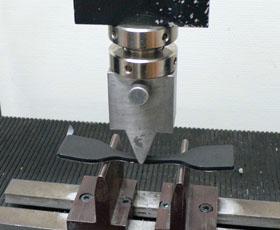The flexural and tensile properties of the material are tested by applying a load to test specimens for a given time period. Such testing provides values such as E-module, flexural stress, tensile stress and elongation.
- Hem/
- Laboratory
DSC
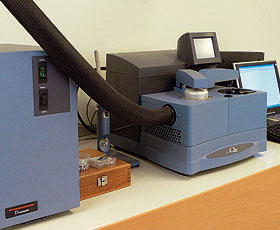
A differential scanning calorimeter (DSC) provides information such as the crystallization temperature of the material, which also provides information about the “condition” of the material.
Testing equipment: TA-instrument Q100
Color spectrophotometer
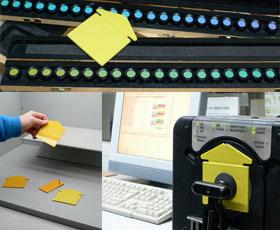
We use a spectrophotometer to ensure accurate color measurement of all colors. We monitor colors in D65, A, TL84 light and the color measurement equipment measures according to the dE, dL, dA, dB, dC, dH equation.
Testing equipment: MacBeth Ci5 and Macbeth 310
Flammability test – GWT
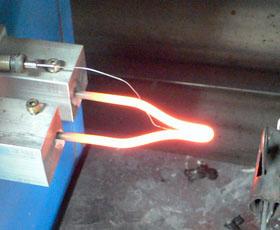
A glow wire is heated up to different temperatures (between 650 – 960° C) and a test specimen is applied to the glow wire. This test method is frequently used in the electronics industry.
Testing equipment: Friborg GWT
Flammability test – MVSS 302
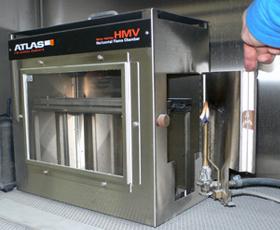
This testing equipment checks the rate at which a material burns (mm/min) and the test method is designed for the automotive industry.
Testing equipment: Atlas HMVUL
Flammability test – UL-94
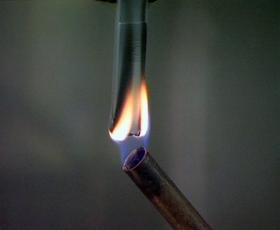
Materials are tested for flammability to meet the UL-94 standard. The materials are classified into UL-94 flammability classes V0, V1, V2, HB and 5VA and 5VB.
Testing equipment: Atlas HVUL2 horizontal vertical flame chamber
Flowability MFI
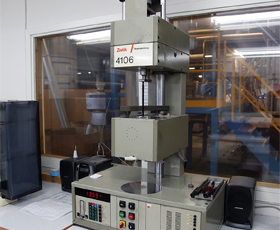
The MFI measurement method is the most common way of testing a material’s flowability.
Tests are performed at predetermined temperatures and weights.
Test equipment: Zwick 4106.
FTIR
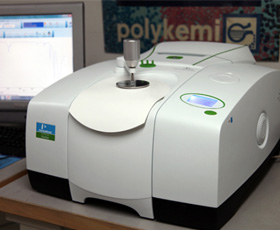
The FTIR equipment makes it possible to test and check plastic material and to analyze the composition of the plastic (polymer type, mineral type, additives, etc.).
Testing equipment: Perkin Elmer Paragon 1000
Gas chromatography
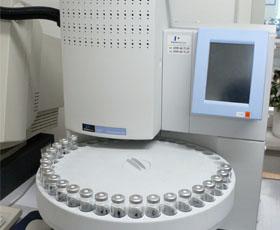
Gas chromatography is able to quantify the contents of a plastic material.
Testing equipment: Perkin Elmer Clarus 500
Headspace
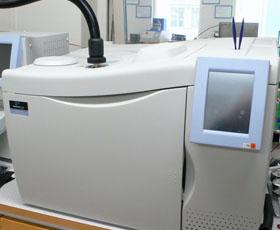
Headspace combined with gas chromatography makes it possible to analyze hydrocarbon emissions from plastic materials.
Testing equipment: Perkin Elmer TurboMatrix HS
Scratch-resistance
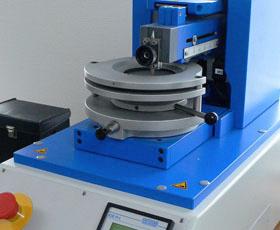
This instrument is the latest technology for analyzing the scratch-resistance of a material. It makes scratches in a grid pattern which is then measured in the spectrophotometer.
Testing equipment: Erichsen Scratch tester 430P
Charpy impact strength
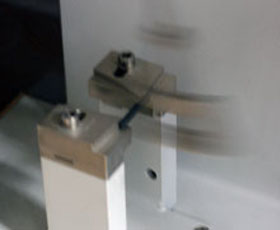
Measurement of impact strength, performed with both cutting and non-cutting test sticks.
Testing can be performed at room temperature (+23°C) and at temperatures down to -40°C.
Test equipment: Ceast Resil 5.5
Heavy metal presence XRF
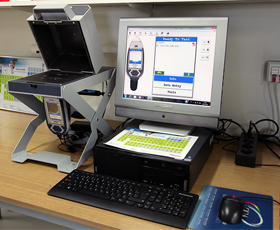
With our XRF equipment, we can verify that our recycled raw material does not contain any heavy metals. We can thus comply with the RoHS Directive (2011/65 / EC).
We can analyze both the occurrence and how much of the following heavy metals contained in a raw Mercury (Hg), Cadmium (Cd), lead (Pb), Hexavalent Chromium (Cr6 +), Polybrominated biphenyls (PBB) and Polybrominated diphenyl ethers (PBDEs).
Weather simulation – WoM
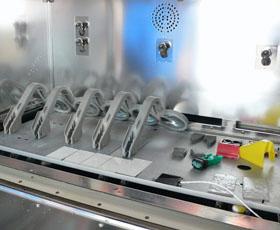
Test specimens/end components are exposed to UV light, heat, humidity and rain simulation. Testing provides the best possible simulation of how the plastic changes (color, mechanical properties etc.) when placed outdoors in different environments.
Testing equipment: Atlas Suntest XXL

